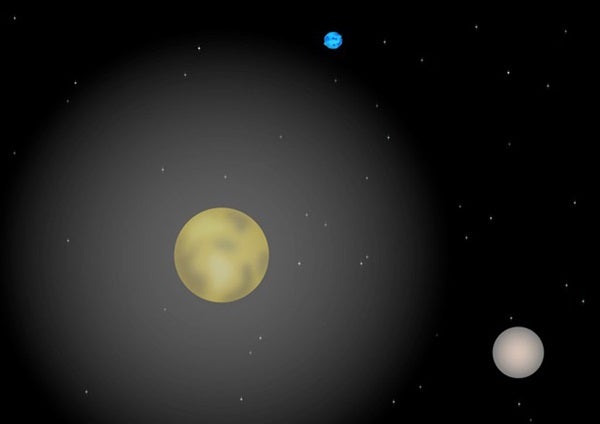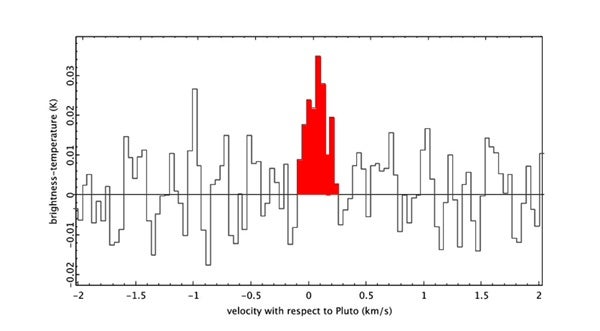Pluto was discovered in 1930 and considered the Sun’s smallest and most distant planet. Since 2006, astronomers have regarded it as a “dwarf planet,” one of a handful of such bodies that orbit in the distant reaches of the solar system, out beyond Neptune. Pluto is the only dwarf planet known to have an atmosphere.
The new results, obtained at the 15-meter James Clerk Maxwell Telescope in Hawaii, show a strong signal of carbon monoxide gas. Previously, the atmosphere was known to be more than 60 miles (100 kilometers) thick, but the new data raise this height to about 2,000 miles (3,000 km), which is a quarter of the way to Pluto’s largest moon, Charon. The gas is extremely cold, about -365 Fahrenheit (-220° Celsius). A big surprise for the team was that the signal is more than twice as strong as an upper limit obtained by another group, who used the IRAM 30-meter telescope in Spain in 2000.
“It was thrilling to see the signal gradually emerge as we added in many nights of data,” said Jane Greaves from the University of St. Andrews. “The change in brightness over the last decade is startling. We think the atmosphere may have grown in size, or the carbon monoxide abundance may have been boosted.” Such changes have been seen before but only in the lower atmosphere, where methane, the only other gas ever positively identified, has also been seen to vary.
“The height to which we see the carbon monoxide agrees well with models of how the solar wind strips Pluto’s atmosphere,” said Christiane Helling from the University of St. Andrews.
Unlike the greenhouse gas carbon dioxide, carbon monoxide acts as a coolant, while methane absorbs sunlight and thus produces heating. The balance between the two gases, which are just trace elements in what is thought to be a nitrogen-dominated atmosphere, is critical for its fate during the many decades-long seasons. The newly discovered carbon monoxide may hold the key to slowing the loss of the atmosphere. But if the chilling effect is too great, it could result in nitrogen snowfalls and all the gases freezing out onto the ground. “Seeing such an example of extraterrestrial climate change is fascinating,” said Greaves. “This cold, simple atmosphere that is strongly driven by the heat from the Sun could give us important clues to how some of basic physics works, and act as a contrasting test bed to help us better understand the Earth’s atmosphere.”











